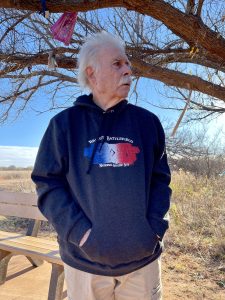Memorial Day honors the memory of all who have made America. It is appropriate that we do so, for in remembering our ancestors we perpetuate their countless blessings to us. Of course, Memorial Day pays special homage to all of our departed veterans who sacrificed so much, some even their lives, so that we can live ours in peace and plenty.
Our best-known Memorial Address was delivered before America had declared a special day to honor our departed. President Abraham Lincoln spoke for about eleven minutes on November 19, 1863 at the battlefield in Gettysburg where he honored all who had served on July 1, 1863.
Lincoln did not honor just Union soldiers but included the Confederate veterans, without naming either side. President Lincoln’s Gettysburg Address was a preview of his Second Inaugural Address of March 4, 1865 in which, in about 700 words, Lincoln set forth the best way for our nation to honor the sacrifices of the departed:
“With malice toward none,
With charity for all,
….
Let us strive … to bind up
The nation’s wounds;
….
To do all which may achieve
and cherish a just and a lasting peace,
Among ourselves, and with all nations.”
Lincoln’s two short addresses would be good balm for helping to assuage our current attitude of ill will and remind us of what is our duty to our ancestors, especially our veterans, to our country and to what we claim to be the American ideals. Perhaps we should Memorialize these.
Although my short poem to veterans that I gave as a speech on July 23, 2008 most certainly does not belong with the pantheon of Abraham Lincoln’s magnanimous words, I respectfully offer it in the hope it includes thoughts our veterans and those who love them would find comforting:
“WELL DONE
At Lexington and Concord, the young blood began to flow.
At the Battle of New Orleans, muskets killed our cousins and our foes.
At the Alamo and Buena Vista, we stood to the last man.
At Shiloh, Chickamauga and Gettysburg, brothers’ blood soaked the sand.
At San Juan Hill and when the Maine went down, our soldiers never flinched.
At Verdun and by the Marne, a million men died in the trench.
At D-Day and the Battle of the Bulge, after Hiroshima’s mushroom clouds,
At Incheon Landing the forgotten war brought many more funeral shrouds.
At Khe Sanh and during Tet, we held our own and more,
At the Battle of Medina Ridge, our Gulf War warriors upheld the Corps.
At Sinjar, Mosul, and places with strange names,
Our Iraqi War veterans now earn their fame.
In uniforms, our citizens have served well everyone.
Today, we here proclaim to them our solemn praise: Well done!”




